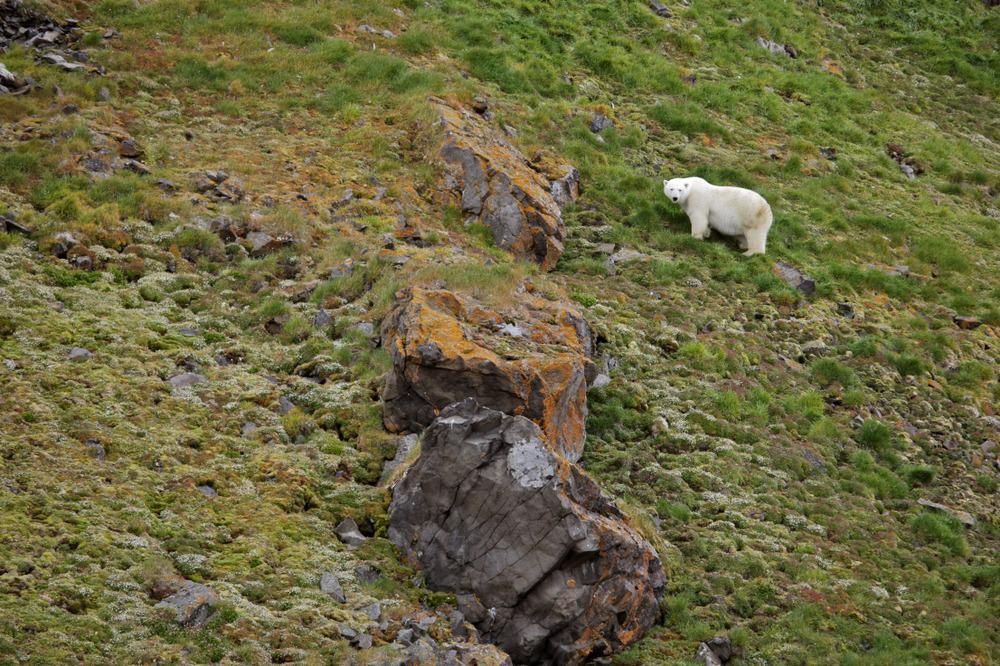The increasing proliferation of plant life in the Arctic may not be a massive difference-maker in the battle against global warming, new research reveals.

Image Credit: Vladimir Melnik/Shutterstock.com
The image of the Arctic as a frozen wasteland could soon be a thing of the past thanks to climate change, with the region warming at double the rate of other areas of the planet.
Earth’s northern polar region experienced its second hottest 12 month period since records began in 2020. The preceding seven years also matching records set in the 1900s said the National Ocean and Atmospheric Administration (NOAA) in their 2020 report.
Though a worrying trend, researchers had believed that this warming could come with an unexpected upside. There was hope in the scientific community that as more plants began to grow in the Arctic thanks to the increasingly favorable conditions, the associated demand for carbon dioxide would create a new carbon dioxide sink and reduce the quantity of this greenhouse gas in Earth’s atmosphere.
Unfortunately, a team of scientists led by researchers from UC Irvine and Boston University has discovered that the increased plant biomass in the Arctic will not make as much impact on carbon dioxide and, in turn, climate change as previously hoped.
“What does greening really mean? Can we really trust it to save us from climate change?” says Jon Wang, an Earth system scientist at UCI. “A big question is: What’ll happen to the carbon that’s currently stored in these forests as above-ground biomass in the face of a changing climate?
Wang led the research alongside Mark Friedl. The team’s research is documented in a paper published in the latest edition of the journal Nature Climate Change¹.
A Hotter and Drier Arctic
The answer to the question posed by Wang arrived at by the researchers is that carbon is not staying in plants as climate change also makes wildfires in those northern latitudes more common.
This is coupled with the increase of timber harvests in the region. This means that whilst the northern polar region may be becoming greener, it is also becoming hotter and drier.
The net result: this new green biomass is not storing carbon — it is losing it as a result of wildfires.
“What we found overall is across this whole domain over the past 31 years the carbon stocks have increased modestly,” explains Wang. “What we estimate is that 430 million metric tons of biomass has accumulated over the last 31 years — but across this domain, it would’ve been nearly double if it weren’t for these fires and harvests that are keeping it down.”
The team’s finding arose from the quest to discover just how helpful the Arctic’s intensifying ‘greenification’ would be in the battle against global warming. Whilst it was assumed that this process would draw down carbon dioxide, no one really knew to what extent that would actually help.
Accounting for Wildfires
To test just how effective the greenification of the Arctic would be in the reduction of carbon dioxide, the team turned to space-based data gathered by two satellite missions — the US Geological Survey (USGS) and NASA’s Landsat and ICESat.
The Landsat is the longest-running satellite imagery system launched in July 1972. Thus it allowed the researchers to study the reflection of light from the earth’s surface since 1984. From this data, the team could see how abundant plant life was across these 3 decades. Meanwhile, data from ICESat — NASA’s Ice, Cloud, and land Elevation Satellite — showed the team how high forest canopies have been, albeit over a shorter timescale.
Combining these datasets allowed the scientists to model the amount of carbon stored in biomass across a 2.8-million-square-kilometer region spanning Canada and Alaska.
The team then went a step further than this, cross-referencing this information with measurements of wildfire severity in the region. It was in the juxtaposition of this satellite data with the increase of such configurations by around two-thirds that revealed the flaws in previous models.
The team found that factoring in wildfires meant that whilst plant biomass still increased, this proliferation was not as significant as seen in previous models which had struggled to factor in wildfires.
Wang says that this improved model should assist climate change researchers to build a more accurate picture of the warming of Earth over the coming years.
The data used by the team could also provide an independent test for future models because of the way it represents the feedback that occurs between the carbon cycle and Earth’s climate.
Wang concludes: “The change is good news for climate — but it’s also much lower than we might’ve expected because these fires have raged, and gotten more severe.”
Sources
Wang. J. A., Baccini. A., Farina. M., et al, [2021], ‘Disturbance suppresses the above-ground carbon sink in North American boreal forests,’ Nature Climate Change, [https://doi.org/10.1038/s41558-021-01027-4]
Disclaimer: The views expressed here are those of the author expressed in their private capacity and do not necessarily represent the views of AZoM.com Limited T/A AZoNetwork the owner and operator of this website. This disclaimer forms part of the Terms and conditions of use of this website.